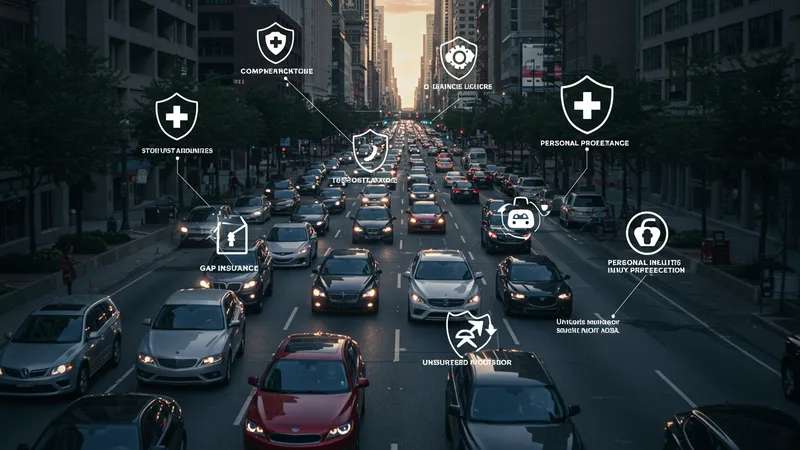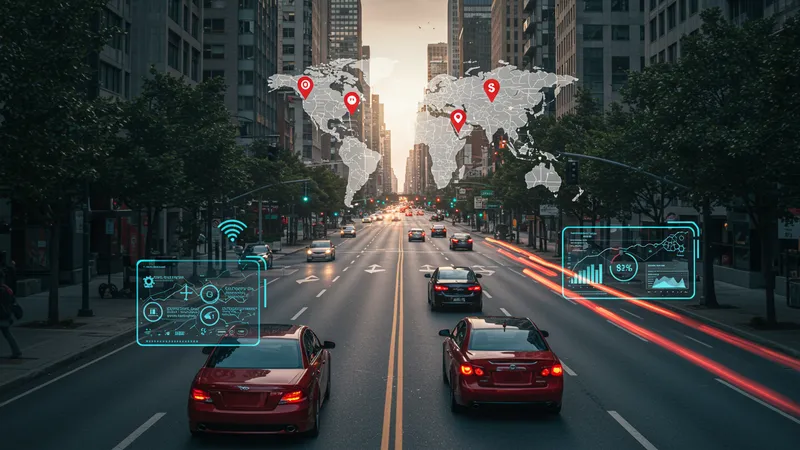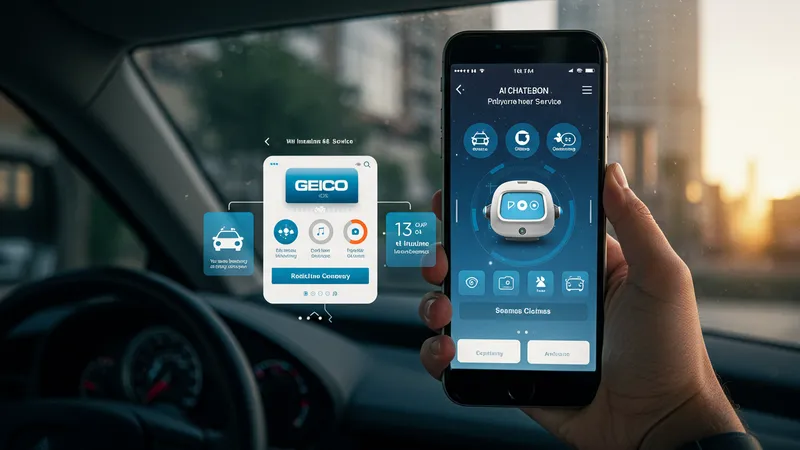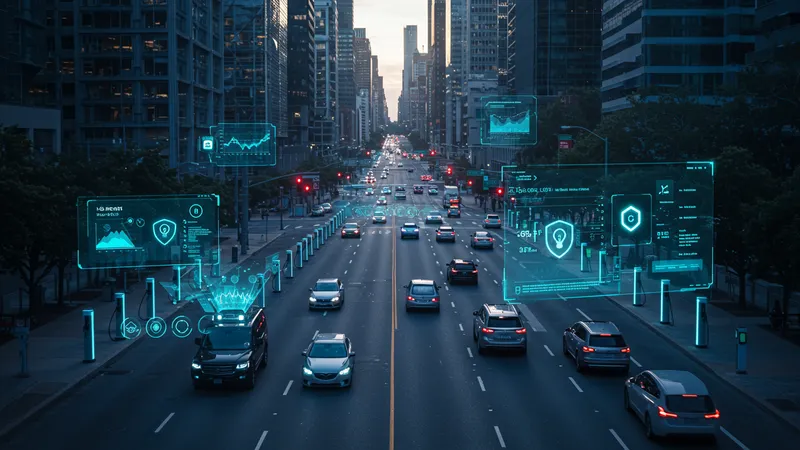

It isn’t easy to imagine navigating the world of vehicles without protection, and that’s exactly where car insurance comes in. In 2025, understanding car insurance in the USA means grasping how policies shield drivers, passengers, and vehicles from financial setbacks related to accidents, theft, weather, and costly legal issues. This complex web of coverage options and rules has evolved with changes in laws, technology, and consumer habits—making it a dynamic and crucial topic for every American vehicle owner.
Car insurance in the USA is not just a legal formality but a personalized product. Insurance providers analyze your age, location, type of vehicle, driving history, and even your credit score to assess rates and coverage types. As of 2025, rapid advancements in digital platforms and telematics devices are shifting the landscape further, allowing real-time tracking and tailored policy adjustments. The details you’ll need to know go beyond state minimums and premiums, stretching into how to maximize coverage, minimize risk, and ensure peace of mind out on the road.

Comparing these providers involves more than headline premiums—consider each company’s claims process, digital convenience, range of coverage, and available discounts. For instance, GEICO boasts a streamlined mobile app and a reputation for quick claim resolution, while State Farm stands out with local agents offering tailored service. Progressive, on the other hand, prides itself on customizable plans and innovative usage-based insurance through its Snapshot program.
In the USA, the baseline for car insurance is often dictated by each state’s minimum liability requirements. However, most drivers choose to go beyond basic policies—combining liability with comprehensive and collision coverage. The trend in 2025 points to telematics influencing more personalized premiums: safer drivers monitored via apps or plug-in devices may see significant reductions compared to those with traditional risk profiles.
Market research reveals that customer satisfaction in 2025 is heavily affected by digital accessibility, especially for millennials and Gen Z. Leading providers continue to enhance their online platforms, offering faster quotes, virtual agent interactions, and streamlined claims tracking—all crucial for modern drivers expecting instant, reliable service at their fingertips.
While average annual premiums vary by provider and region, all three examples—GEICO, State Farm, and Progressive—demonstrate the shifting priorities of American consumers. Transparency, mobile technology, and flexibility in payment or coverage levels are increasingly critical factors. New entrants may emphasize usage-based insurance even more, intensifying the focus on customized experiences.
From evolving technology to shifting legal standards, car insurance in the USA in 2025 is a reflection of both individual needs and industry-wide innovation. The deeper details reveal even more valuable insights ahead—especially when you explore policy types, feature upgrades, and the inside track on savings.
The types of car insurance policies available in the USA have grown in range and sophistication by 2025. While liability insurance remains the legal minimum in all states, drivers can select from a spectrum of add-ons tailored to their specific needs. Comprehensive policies cover damage from events like theft, vandalism, and natural disasters, while collision coverage steps in after an accident, no matter who is at fault. For high-value vehicles or leased cars, gap insurance and new car replacement are increasingly popular add-ons.

Personal Injury Protection (PIP) and Medical Payments coverage are now found in more states, addressing rising health care costs after accidents. Uninsured and underinsured motorist coverage is another vital option, providing reassurance when involved with drivers lacking adequate protection. For drivers using their vehicles for rideshare platforms, specialized endorsements or policies address commercial use—a growing necessity in the modern gig economy.
Advanced driver assistance systems (ADAS) and connected vehicle technologies are influencing new policy models. Insurers reward owners of cars equipped with autobraking, lane-keeping, and telematic sensors, sometimes offering lower premiums or additional discounts. This shift reflects the industry’s response to declining accident rates due to advanced technology and the desire to encourage safer driving behaviors.
Policyholders in 2025 benefit from more personalized policy bundles and dynamic adjustment capabilities. Many companies provide online dashboards where customers modify coverage in real time, respond to life changes, and even pause or reallocate specific protections. This flexibility marks a departure from rigid, one-size-fits-all plans of the past, and empowers Americans to actively manage their insurance in response to evolving risks and lifestyles.
Pricing for car insurance in the USA has become highly individualized. Beyond the standard factors—age, location, driving record, and vehicle type—2025 brings greater weight to real-time data. Telematics devices and smartphone apps log driving patterns, speed, braking habits, and mileage, and transmit this data directly to insurers. Low-risk drivers who travel fewer miles or demonstrate safe habits are eligible for lower rates, reshaping traditional risk assessment strategies.

Geographic pricing remains a strong influence, as insurance rates often vary dramatically by zip code. Urban drivers continue to pay higher premiums compared to rural counterparts, reflecting the increased risk of theft or accidents. Providers like State Farm and Progressive adjust rates quickly in response to shifts in local accident statistics or economic conditions—helping to explain the often fluctuating annual averages you’ll see from year to year.
Credit-based insurance scoring, while controversial, is still used by many insurers. Studies in the USA show that drivers with higher credit scores tend to pay less, but some states are considering options to limit or ban this practice by 2025. Additionally, bundling car insurance with home or renter's policies provides significant savings—multi-policy discounts can range from 10% to 25% depending on the provider and state of residence.
For drivers seeking to optimize pricing, shopping around annually has proven effective. Comparison tools and aggregator sites, many powered by artificial intelligence in 2025, are invaluable resources for reviewing real-time quotes personalized to your situation. This enables consumers to navigate the evolving landscape of discounts, features, and adjustments—making informed choices that reflect their needs and budgets.
Digital interactions have become the dominant force shaping customer service expectations in the American car insurance market. By 2025, most leading providers—including GEICO and Progressive—offer fully integrated mobile apps for policy management, claims filing, and communication. These apps enable users to report accidents, upload documents, track claim progress, and receive status notifications anytime, anywhere.

Artificial intelligence (AI) and chatbot technology are transforming the customer experience. Automated virtual agents can answer policy questions instantly, initiate roadside assistance, and even suggest tailored coverage upgrades. These advancements mean less waiting on hold and more direct, efficient problem-solving—a significant leap in convenience for drivers with busy lifestyles.
Person-to-person service still plays a vital role, especially with providers like State Farm, which emphasizes a vast local agent network. In complex cases or when customers prefer detailed explanations, these agents can provide valuable context and help navigate multiple policy options. This hybrid approach—combining digital convenience with human expertise—is proving most effective in meeting diverse customer preferences in 2025.
Insurers invest heavily in user experience research to streamline website navigation, reduce paperwork, and minimize claim resolution times. Customer feedback is gathered continuously online, pushing companies to adapt features and policies. As a result, responsiveness and ease of use have become major differentiators in car insurance satisfaction rankings across the USA.
2025 marks a turning point for car insurance in the USA, as industry innovation accelerates and consumer expectations evolve. Usage-based insurance (UBI) continues to expand, giving drivers control over their premiums based on actual driving patterns. This shift rewards safe habits while encouraging widespread adoption of telematics—potentially leading to safer roads nationwide.

Electric and autonomous vehicles are changing risk profiles and prompting new coverage categories. Insurers are developing specialized products for EVs, addressing concerns like battery replacement, charging station incidents, and software vulnerabilities. As partial automation becomes more common, policies adapt to include cyber protection and expanded liability options unique to self-driving technology.
Insurtech start-ups add fresh competition, introducing innovative business models such as on-demand and pay-per-mile insurance. These flexible solutions are particularly attractive to urban residents or those who drive sporadically. The trend toward transparency and personalized experiences is challenging established providers and reshaping how Americans approach vehicle protection.
Environmental and regulatory changes, from climate risks to evolving state mandates, also influence future directions. Providers are investing in analytics to anticipate storm surge, wildfire, and other catastrophe exposures—enabling more precise risk management and quicker settlements. The dynamic landscape ensures car insurance in the USA will continue to adapt, securing drivers in a rapidly changing world.